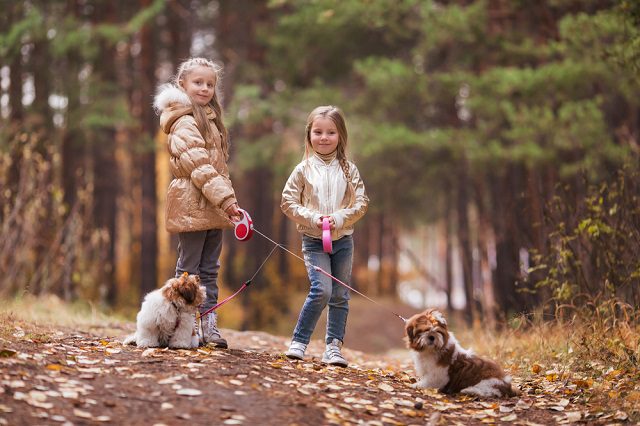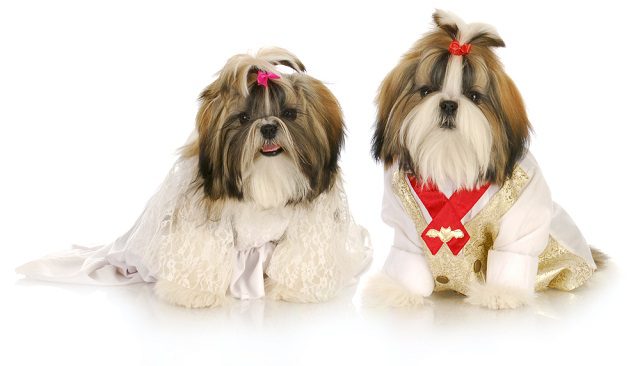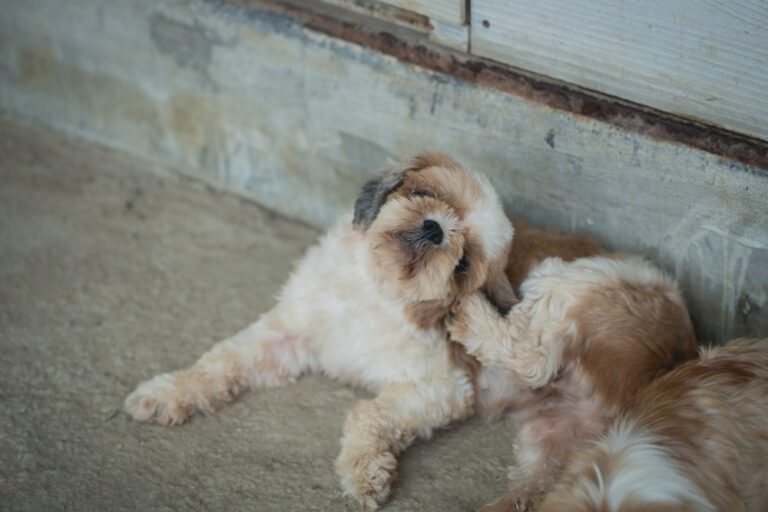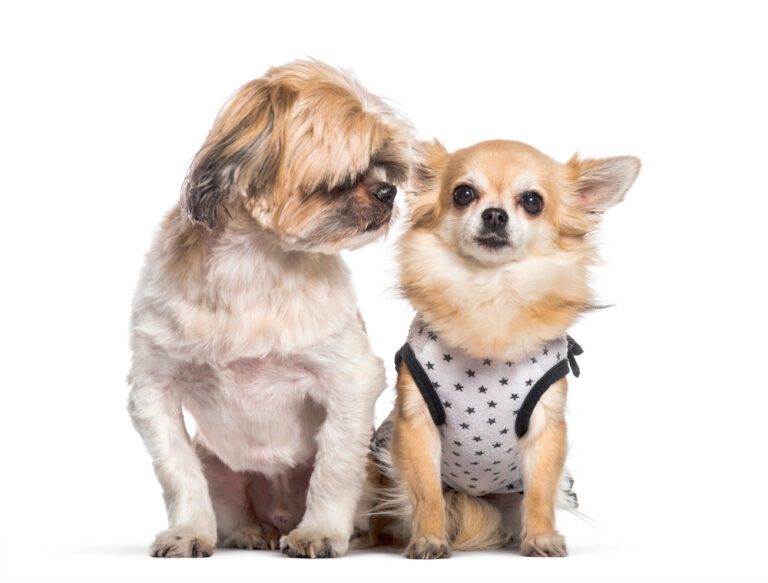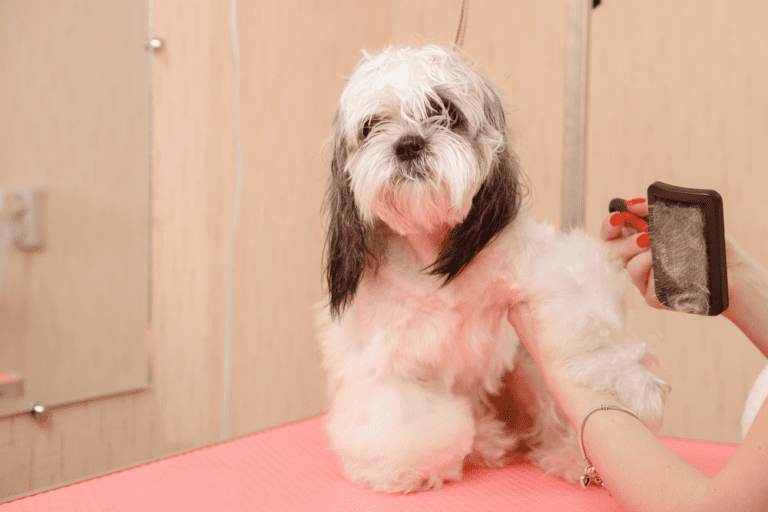When is the Right Time to Stud Your Shih Tzu?
Are you a proud Shih Tzu owner wondering when is the right time to stud your Shih Tzu? Look no further because this complete guide has all the answers you need. Whether you’re considering breeding your Shih Tzu for the first time or are an experienced breeder looking to refresh your knowledge, this article will provide the essential information you need to make an informed decision.
Breeding a Shih Tzu is a big responsibility that requires careful planning and consideration. It is crucial to understand the health, age, and temperament factors that contribute to the overall success of the breeding process. By following the guidelines outlined in this guide, you’ll ensure the well-being of both your Shih Tzu and their potential offspring.
So, let’s dive in and explore when the right time is to stud your Shih Tzu!
The heat cycle in female dogs
Before considering breeding your female Shih Tzu, it is essential to understand their heat cycle. The heat cycle, or estrus, is when a female dog is fertile and can conceive.
The cycle typically spans approximately three weeks and encompasses stages: proestrus, estrus, diestrus, and anestrus.
During the proestrus stage, which lasts 9 to 12 days, you may notice slight vulva swelling and a bloody discharge. This is the preparatory stage for the upcoming estrus phase. It is important to note that breeding during this stage is not recommended as the female is not receptive to mating.
Next comes the estrus stage, which usually lasts 5 to 9 days. This is the optimal time for breeding as the female is receptive to the male and can conceive. Signs of being in estrus include a change in behavior, increased friendliness towards male dogs, and a straw-colored discharge. It is crucial to closely monitor your female Shih Tzu during this stage to ensure you don’t miss the opportunity for successful breeding.
After estrus, the diestrus stage begins, lasting for around 60 to 90 days. During this period, the female’s reproductive system prepares for pregnancy. If mating has occurred, this is when you can expect to see signs of pregnancy, such as weight gain and nipple enlargement. If mating hasn’t happened, the female will undergo a pseudo-pregnancy.
Lastly, anestrus is the resting period between cycles lasting about 4 to 5 months. The female dog is not receptive to mating during this stage, and her reproductive system is at rest.
Understanding your female Shih Tzu’s heat cycle is crucial for determining the right breeding time and ensuring successful reproduction. Keep a close eye on the signs and consult your veterinarian for any specific guidance related to your dog’s needs.
Signs that your Shih Tzu is ready to breed
Now that you understand the heat cycle stages, you must recognize the signs that indicate your Shih Tzu is ready to breed. These signs can vary from dog to dog, but there are some common indicators to look out for:
- Behavioral changes: During the estrus stage, your female Shih Tzu may display changes in behavior. She may become more affectionate, seek attention from male dogs, and exhibit a more friendly and playful demeanor.
- Swelling of the vulva: You may notice swelling as the heat cycle progresses. This is a physical sign that your Shih Tzu is nearing the peak of her fertility.
- Changes in discharge: The color and consistency of the discharge can also indicate the stage of the heat cycle. The discharge is typically bloody in the proestrus stage, while in the estrus stage, it becomes straw-colored and lessens in quantity.
- Lifted tail: When a female Shih Tzu is in heat, she may hold her tail to the side or lift it slightly, exposing her vulva. This is a natural behavior that signals her receptiveness to mating.
It’s important to remember that every dog is unique, and the signs may vary slightly. Observation and understanding your dog’s behavior and physical changes are vital in determining the right time for breeding.
Factors to consider before breeding your Shih Tzu
Breeding a Shih Tzu requires careful consideration and preparation. Here are some essential factors to keep in mind before deciding to produce your beloved pup:
- Health screening: It is crucial to ensure that both the male and female Shih Tzu have optimal health before breeding. Health screenings should include genetic testing to identify potential inherited diseases that could be passed on to the offspring. Consulting with a reputable veterinarian or a canine reproductive specialist is highly recommended to ensure the breeding pair is healthy and suitable for reproduction.
- Age of the dogs: Both the male and female Shih Tzu should be in the appropriate age range for breeding. Generally, females should be at least 2 years old, as breeding them at a younger age may pose health risks. Conversely, males can start producing as early as 6 to 12 months, but it is advisable to wait until they are fully matured and mentally ready.
- Temperament and behavior: Breeding should only be considered for Shih Tzus with stable temperaments and good behavior. Aggressive or fearful traits should not be passed on to future generations. Assessing the temperament and behavior of both male and female dogs is essential to ensure they have the right qualities for producing well-rounded and healthy puppies.
- Breeding goals: Determine your breeding goals and the purpose of the litter. Are you aiming to improve the breed? Are you breeding for companionship? Clarifying your goals will help you select the right stud dog and make informed decisions throughout the breeding process.
Considering these factors will contribute to the overall success and well-being of the breeding process. Breeding responsibly ensures the production of healthy and temperamentally sound Shih Tzu puppies.
Finding a suitable stud dog for your Shih Tzu
Once you’ve decided to breed your female Shih Tzu, the next step is finding a suitable stud dog. Choosing the right stud is crucial in achieving your breeding goals and ensuring the health and quality of the puppies. Here are some important considerations when selecting a stud dog:
- Health and genetic testing: Just like with your female Shih Tzu, it is essential to ensure the stud dog is in good health. Conducting genetic testing and screening for any inherited diseases is crucial to avoid passing on any potential health issues to the offspring. Requesting health clearances and reviewing the stud dog’s pedigree can provide valuable information about their health history.
- Temperament and behavior: Assessing the temperament and behavior of the stud dog is essential to ensure compatibility with your female Shih Tzu. Look for dogs with stable temperaments, good socialization, and desirable breed characteristics. Meeting the stud dog and observing their behavior can help determine if they are a suitable match.
- Breed standards: If your goal is to improve the breed, selecting a stud dog that closely adheres to the breed standards is essential. Please familiarize yourself with the breed standards set by reputable kennel clubs and compare them with the physical attributes of the potential stud dog.
- Breeding history: Inquire about the stud dog’s breeding history and the quality of the puppies produced from previous litters. If possible, talk to the owners of the previous litters to gather information about the health, temperament, and overall satisfaction with the puppies.
Remember to take your time and do thorough research when selecting a stud dog. It is important to choose a dog that complements your female Shih Tzu and aligns with your breeding goals.
Preparing for the breeding process
Once you have selected a suitable stud dog, it’s time to prepare for the breeding process. Here are some important steps to take:
- Consult with a veterinarian: Before breeding, consult a veterinarian specializing in canine reproduction. They can provide valuable guidance and perform necessary health checks to ensure the female Shih Tzu is in optimal condition for breeding.
- Health and nutrition: Ensure that the female and male Shih Tzu are healthy and receive a balanced diet. Proper nutrition is vital for reproductive success. Consult with your veterinarian to determine the appropriate diet and any necessary supplements for your dogs.
- Timing: Timing is crucial in the breeding process. It is recommended to work closely with your veterinarian to determine the optimal time for breeding based on the female’s heat cycle and signs of fertility. Your veterinarian may recommend hormone testing or perform vaginal cytology to pinpoint the most fertile period.
- Breeding contract: If you are breeding with another owner’s stud dog, it is essential to have a breeding contract in place. The contract should outline the responsibilities and expectations of both parties, including financial agreements, stud fees, and ownership rights of the resulting puppies.
By taking these preparatory steps, you can ensure a smooth and successful breeding process for your Shih Tzu.
The breeding process and considerations
Once the female Shih Tzu is in the right stage of her heat cycle and all preparations have been made, it’s time for the breeding process. Breeding can occur naturally or through artificial insemination, depending on the circumstances and preferences of the owners.
During natural breeding, the male and female dogs are allowed to mate naturally. This usually involves a series of breedings over a few days to increase the chances of successful fertilization. It is important to supervise the mating process to ensure the safety and comfort of both dogs.
Artificial insemination (AI) is another option, especially if the stud dog is located in a different geographical location or if there are concerns about the female Shih Tzu’s safety during mating. AI involves collecting semen from the male and introducing it into the female’s reproductive tract using specialized techniques. Consult with a veterinarian experienced in AI to ensure the procedure is performed correctly.
It’s important to note that breeding can be a complex process, and not all mating attempts result in successful pregnancy. Factors such as timing, fertility, and overall health can influence the success of breeding. Patience and understanding are key throughout this process.
Pregnancy and care during gestation
If the breeding is successful, your female Shih Tzu will enter the pregnancy phase. Pregnancy in dogs typically lasts around 63 days, but it can vary slightly. During this time, it is crucial to provide your dog with proper care and nutrition to ensure a healthy pregnancy and the well-being of the puppies.
- Diet and nutrition: Consult your veterinarian to determine the appropriate diet for your pregnant Shih Tzu. As the pregnancy progresses, her nutritional needs may change. Feeding high-quality dog food specifically formulated for pregnant or nursing dogs is recommended. Make sure she has access to fresh water at all times.
- Exercise and rest: Moderate exercise is beneficial for the pregnant Shih Tzu, but avoid excessive physical exertion or activities that may jeopardize her safety. Provide her with a comfortable and quiet space where she can rest and relax.
- Regular veterinary check-ups: Regular veterinary check-ups are essential during pregnancy. Your veterinarian will monitor the progress of the pregnancy, perform necessary tests, and provide guidance on any specific care requirements.
- Preparation for whelping: As the due date approaches, prepare a whelping area for your Shih Tzu to give birth. Provide a comfortable and warm space with clean bedding and ensure it is secluded from any disturbances. Familiarize yourself with the signs of labor and be prepared to assist or seek veterinary help if necessary.
Preparing for whelping and the birth of the puppies
Whelping, or the birth of the puppies, is a crucial and exciting time in the breeding process. Here are some important considerations to ensure a successful whelping:
- Whelping box: Prepare a whelping box in advance, ensuring it is clean, spacious, and comfortable for your Shih Tzu and her puppies. The box should have high sides to prevent the puppies from escaping and be lined with clean and soft bedding.
- Monitoring and assistance: During the whelping process, closely monitor your Shih Tzu for any signs of distress or complications. Be prepared to offer assistance if needed, but allow her to take the lead as dogs are instinctual when it comes to giving birth. If you notice any abnormal or prolonged labor, contact your veterinarian immediately.
- Puppy care: Once the puppies are born, it is important to provide them with proper care. Ensure they are breathing and remove any membranes or obstructions from their noses and mouths if necessary. Allow the mother to clean her puppies, as this stimulates bonding and aids in their overall health.
- Post-birth care: After the birth, continue to monitor the mother and her puppies closely. Make sure the puppies are nursing regularly and gaining weight. Provide a warm and comfortable environment for them, and consult with your veterinarian for any necessary post-birth care instructions.
Conclusion
Breeding your Shih Tzu is a rewarding but demanding process that requires careful planning and consideration. By understanding the heat cycle, recognizing the signs of readiness, and selecting the right stud dog, you can increase the chances of a successful breeding experience. Throughout the process, prioritize the health and well-being of your dogs and consult with a veterinarian for guidance and support.
After the breeding process is complete, it’s important to provide post-breeding care for your Shih Tzu. Ensure they receive adequate rest and nutrition to recover from the breeding process. Monitor the female for any signs of complications or infections and seek veterinary attention if necessary. Provide a loving and supportive environment for your Shih Tzu as they transition back to their regular routine.
Remember, breeding should always be done responsibly and with the best interests of the breed in mind. By following the guidelines and recommendations outlined in this guide, you’ll be well-equipped to make informed decisions and ensure the well-being of your Shih Tzu and their potential offspring. Happy breeding!
FAQ’s
At what age can I start breeding my Shih Tzu?
It’s generally recommended to wait until your Shih Tzu is at least 2 years old before considering breeding. This allows them to fully mature physically and mentally, reducing the risk of complications during pregnancy and birth.
How often can I breed my Shih Tzu?
It’s important to give your Shih Tzu’s body enough time to recover between pregnancies. Most veterinarians suggest breeding every other heat cycle, which is typically about once a year.
What signs should I look for to know my Shih Tzu is ready to breed?
Your female Shih Tzu will typically show signs of being in heat, including swelling of the vulva, a bloody discharge, and increased affectionate behavior. It’s important to monitor her closely during this time and consult with a veterinarian or breeder to determine the best time for breeding.
Should I breed my Shih Tzu if they have health issues?
Breeding a Shih Tzu with health issues can pass those issues on to their offspring. It’s important to consult with a veterinarian and consider genetic testing before deciding to breed your Shih Tzu.
How can I ensure the health and safety of my Shih Tzu during pregnancy and birth?
Providing proper nutrition, regular veterinary check-ups, and a safe and comfortable environment are key to ensuring the health and safety of your Shih Tzu during pregnancy and birth. It’s also important to be prepared for any potential complications and have a plan in place in case of emergency.



